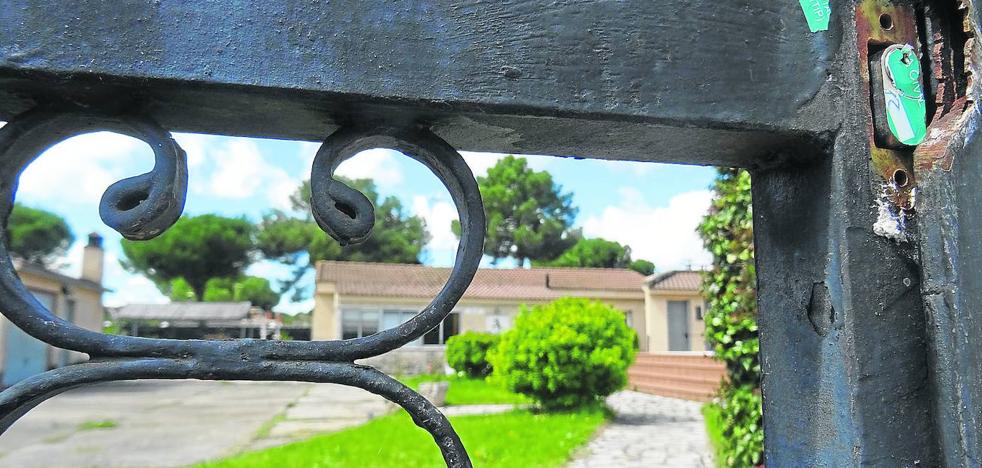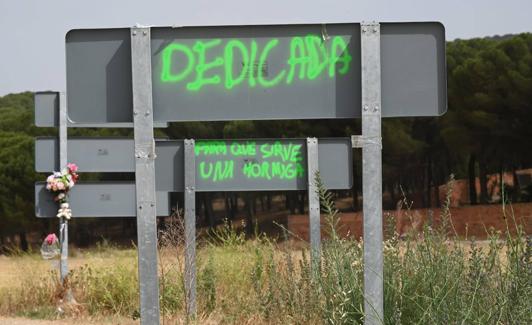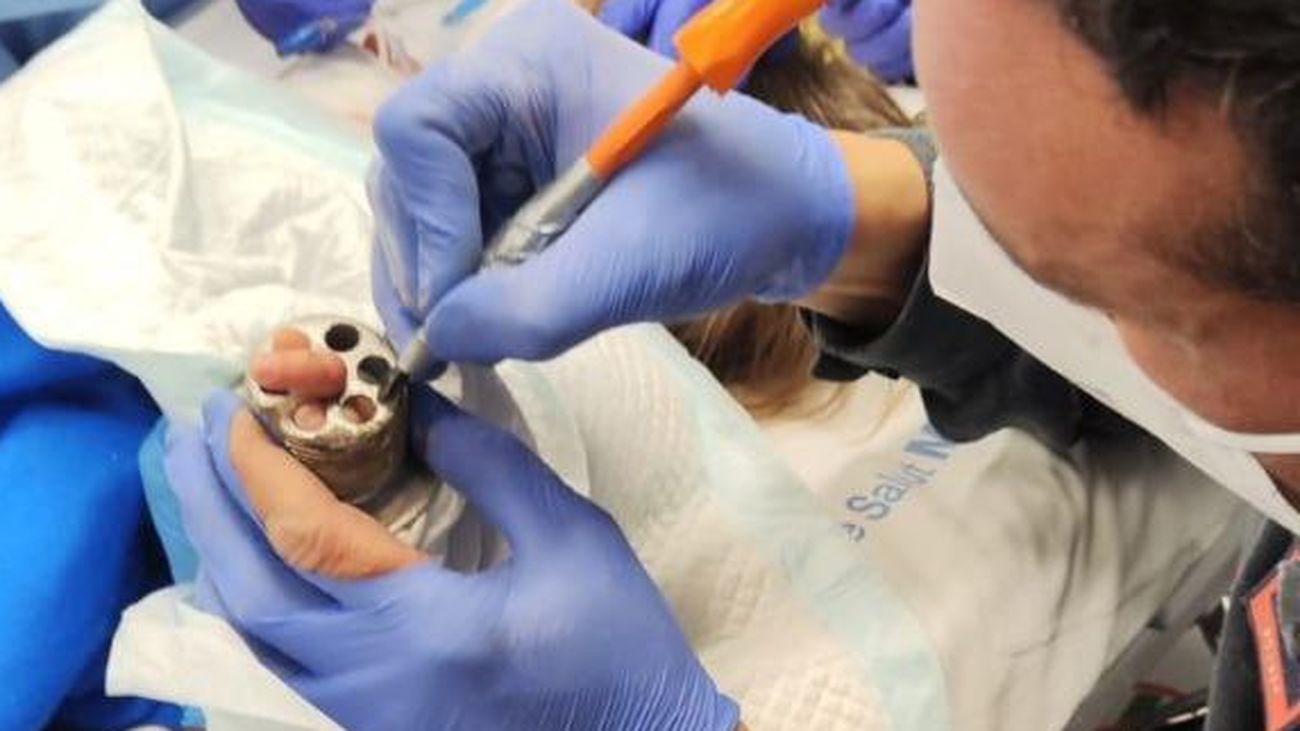A fiber from Óscar S.'s chalet corresponds to Esther López's jacket

The Civil Guard searched the summer chalet of the main suspect in the case of Esther López. /
The young woman had five threads under her nails that match the 'Chinese' type pants worn by the main investigator at dawn
The Criminalistics Service of the Civil Guard has sent to the Court of Instruction the report of the chemistry department that has analyzed dozens of fibers from the chalet and the car of Óscar SM, the main investigator in the case of the disappearance and death of Esther López. One of these fibers, "of unknown origin and beige colour" that was collected on the floor, in the entrance corridor to the summer house in the El Romeral urbanization, "conforms, in terms of its physical characteristics and its chemical composition with the fibers of artificial origin and beige color that make up part of the fabric of the victim's jacket", concludes the study.
This indication would allow the young woman to be located inside the plot (contrary to what the suspect repeatedly stated, that her friend was not in the chalet, but left her at the entrance access to the urbanization), although it could be of a transfer, since both were together for many hours and traveled in the same vehicle, so that the young man was able to take a fiber from the jacket with him to the house. Once again, the scientific findings are inconclusive. The authors of the report themselves explain that these are polyester fibers that "are among the most common in the manufacture of synthetic textile fabrics."
A striking finding is that a fiber collected from the license plate of the main suspect's vehicle matches the fabric of the young woman's socks.
The report also highlights another group of fibers that were located in the young woman's nails. These are five white fibers that "match the white fibers of natural origin that make up part of the fabric of the Chinese-style trousers" that Óscar S. was wearing on the morning of January 13, when Traspinedo's neighbor disappeared. These garments were requested by the Civil Guard from the principal investigated before his statement before the judge on April 25. But, in this case, the scientists point out that, being white fibers, "they have little probative value because they are very ubiquitous", that is, they are everywhere, they are very frequent and, therefore, they can belong to anyone. .
The same happens with another striking finding that could support the thesis of the outrage of Esther López. The Scientific Police recovered a white fiber lodged in the right part of the license plate of the suspect's Volkswagen T-Roc, although it is not specified in the report if it is the rear or front plate. This fiber has the same physical characteristics and the same chemical composition as the white fibers of natural origin that make up part of the fabric of the victim's socks. As with the threads found in the corpse's nails and which would correspond to Óscar's 'Chinese', since they are white cotton, "because they are very ubiquitous, they have little probative value." There is another fiber found in the lower grill of the vehicle, but it does not give positive results.
Some blue strands also in the nails, which do not correspond to the samples contrasted so far, have been saved in case they could belong to a suspect and be relevant to the investigation.
The authors of the chemical study point out that, during the analysis carried out under the optical microscope of the textile threads found in the nails of Esther's corpse, some blue threads of unknown origin have been located. These fibers, they explain, "do not correspond to the typology of those studied so far in the signs" sent to the laboratory.
They specify from the chemical department that there are factors that tend to reduce the evidential value in cases of fiber transfer. It depends, for example, on whether the contact between the victim and the aggressor "would have been legitimate because they share an address or have a relationship", which in principle does not occur in this case, or whether there is a high risk of "contamination" or "as happens with white cotton fibers'. On the contrary, they point out, there are factors that increase the value of the evidence: depending on the place where it has been found, as in cases of sexual assault, if it is in the victim's underwear; if it is polymorphic synthetic fibers; if the number of lint recovered is important, if it involves unusual fabrics or if the time elapsed between the events and the recovery of the lint is minimal, since the probability that it comes from an alternative source decreases.
Winston's pack with three cigarettes found in the young woman's backpack may be important evidence if a homemade filter collected in the chalet corresponds to that pack.
There is another clue that may be relevant to the investigation and that is still in the lab. In Esther López's backpack, which was attached to her body on the side of the Traspinedo highway, she had, among other personal belongings, a Winston-brand tobacco pack with three cigarettes, one of which was missing a side part. That package, which is guarded by the Criminalistics Laboratory of the Valladolid Command, has been placed in the hands of the Department of Ballistics and Traces of the Criminalistics Service of the Civil Guard to carry out a comparison of this piece of cardboard with a homemade mouthpiece picked up at the prime suspect's chalet. The objective is to check "the continuity or mechanical fit" between the two signs "to determine if they originally formed a single element." If the analysis were positive, it would be one more indication to support the thesis that the young woman was inside the plot of the El Romeral chalet that fateful morning of January 13, which for her, could have been her last.
It so happens that, during the technical-ocular inspection thoroughly carried out at the summer house of the family of Óscar S. in El Romeral, on April 9, when the agents were 'combing' the kitchen, inside In a bag that was inside the garbage can, they found a package of Winston with four butts of that brand and the homemade filter of a rolling cigarette.
Graffiti with the lyrics of a song from The Last of the Row
The traffic signs of the Traspinedo road near the place where the body of Esther López was found and which has become a place where her family and friends place offerings of flowers and stuffed animals to remember the young woman, dawned this Friday with graffiti. In them you can read the word «Dedicated» and the title of a song by El Último de la Fila, 'What is an ant for'. The surreal and enigmatic lyrics of this song by Manolo García and Quim Portet conclude: «And now tell me if the alligator is holy».











